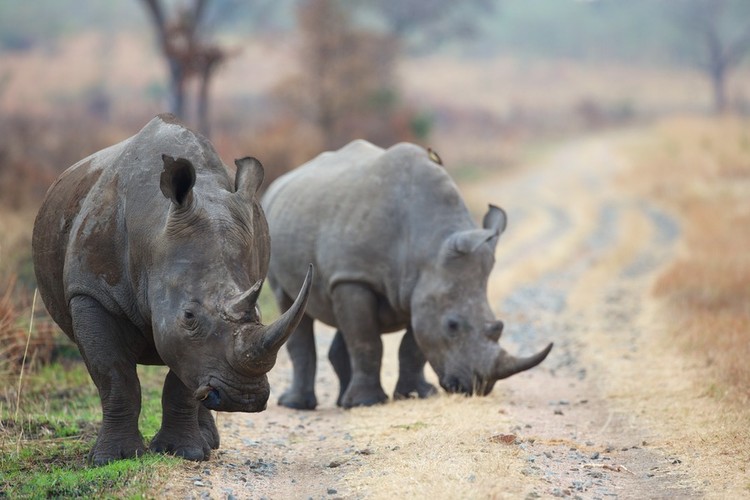Using radiation to stop the traffic of rhino horns
The Wits Rhisotope project hopes to help conservation efforts
The Wits Rhisotope project involves inserting low levels of radioisotopes into the horns of living rhinos to make the horns traceable. Archive photo: Michael Lorentz
According to the World Wide Fund for Nature (WWF), the population of both black and white rhinos has stabilised and even increased slightly since 2021. The white rhino population is estimated to have risen by 5% to about 16,800. The black rhino population is estimated to have risen by 4% to nearly 6,500 in 2022.
Conservation remains a running battle, however, as then Environment Minister Barbara Creecy reported that just shy of 500 rhinos were poached in South Africa in 2023. That battle includes breeding and relocation programs to boost population, anti-poaching activities to protect animals, and awareness campaigns to reduce demand for rhino horn in the markets where it is sold.
A Wits initiative is aiming to add another prong to that campaign: radio-detection. The Rhisotope project, headed by Professor James Larkin of the University of the Witwatersrand’s Radiation and Health Physics Unit, is trialling a new method of disrupting cross-border trafficking of illegal rhino horn. By inserting low levels of radioisotopes into the horns of living rhinos, the project recruits a global network of security infrastructure designed to detect nuclear material and prevent its proliferation.
According to Wits, over 11,000 radiation detection portals are in place around the world at airports, harbours and other ports of entry, making up a sophisticated detection network that dwarfs those in place to detect animal products. The project aims to enable this existing network to be used in clamping down on trafficking of illegal animal products. The markets for rhino horn are primarily international, which means that if poachers and smugglers can’t cross borders, they can’t reach their target market, removing the incentive to poach the animals in the first place.
According to Wits, the radioisotopes are safe and non-toxic, carefully selected to trigger radiation detectors but not to harm the animals or their environment.
In June this year the first 20 rhinos were injected with the radioisotope. While that’s just a tiny fraction of the rhino population, poachers have no way of knowing which rhinos have been treated, so the deterrent already comes into effect, meaning that radiation detectors are now a real threat to poachers and smugglers.
Support independent journalism
Donate using Payfast

Next: Community blocks R3-million park project, demands public participation
Previous: What I learned on my journey through breast cancer
© 2024 GroundUp. This article is licensed under a Creative Commons Attribution-NoDerivatives 4.0 International License.
You may republish this article, so long as you credit the authors and GroundUp, and do not change the text. Please include a link back to the original article.
We put an invisible pixel in the article so that we can count traffic to republishers. All analytics tools are solely on our servers. We do not give our logs to any third party. Logs are deleted after two weeks. We do not use any IP address identifying information except to count regional traffic. We are solely interested in counting hits, not tracking users. If you republish, please do not delete the invisible pixel.

